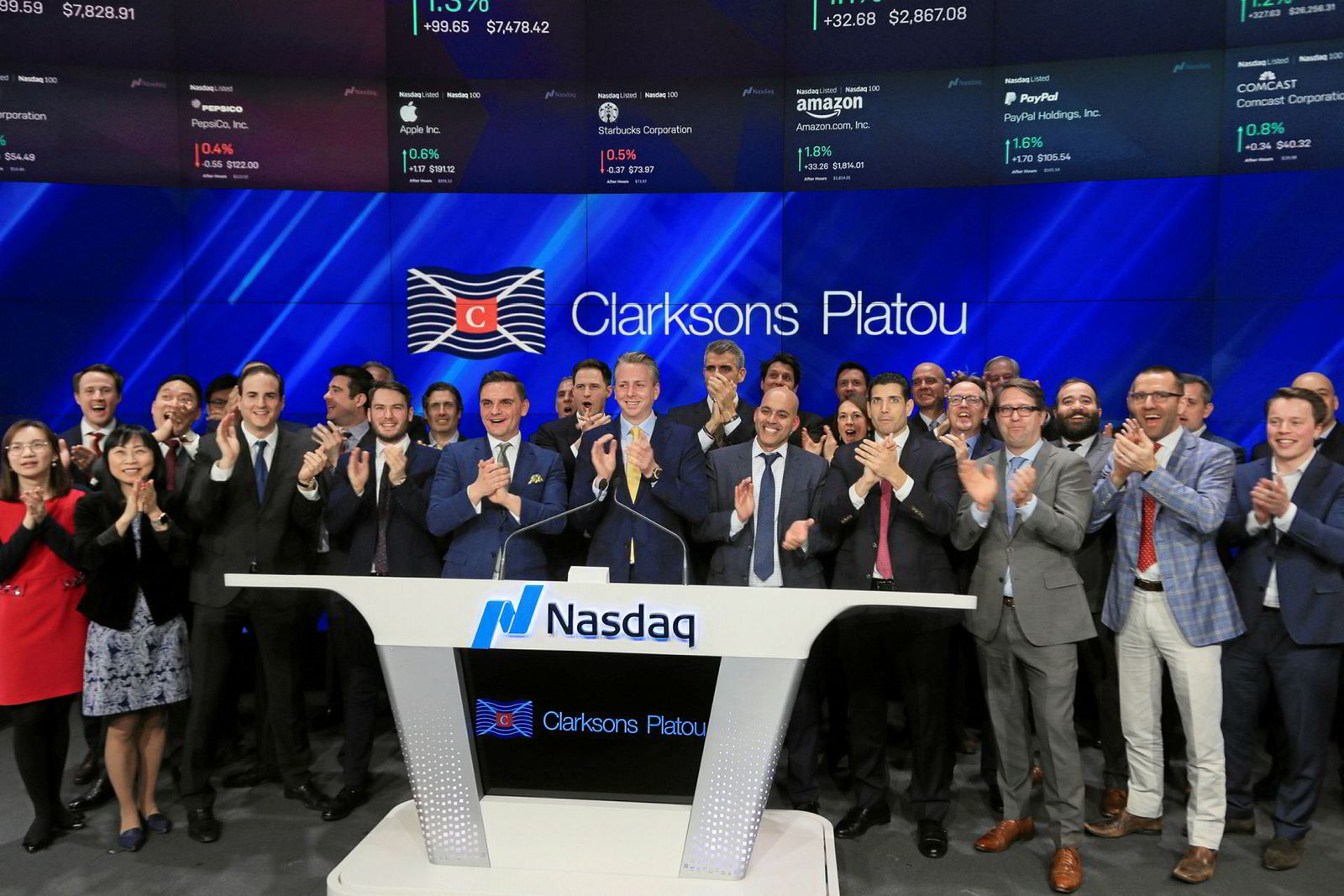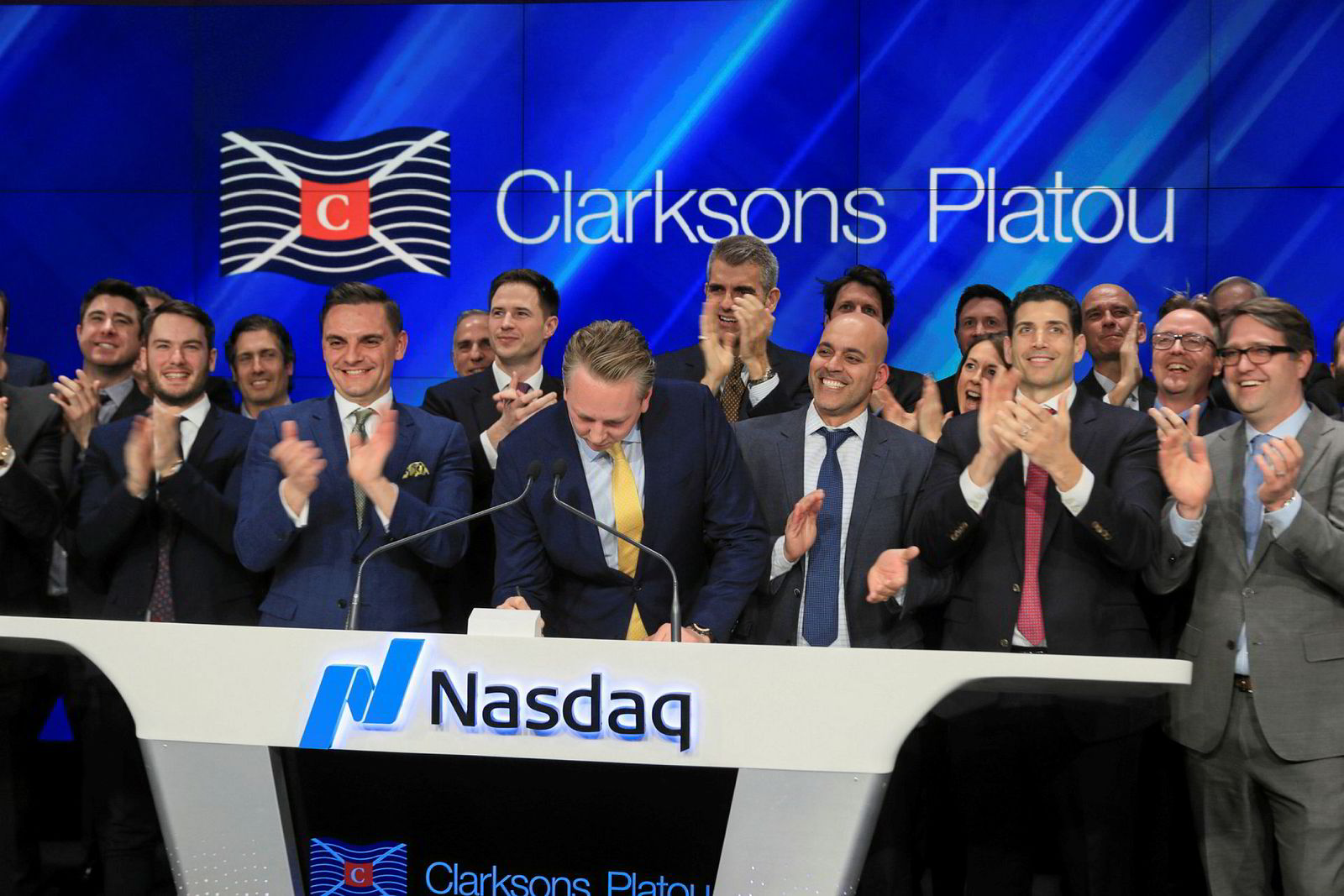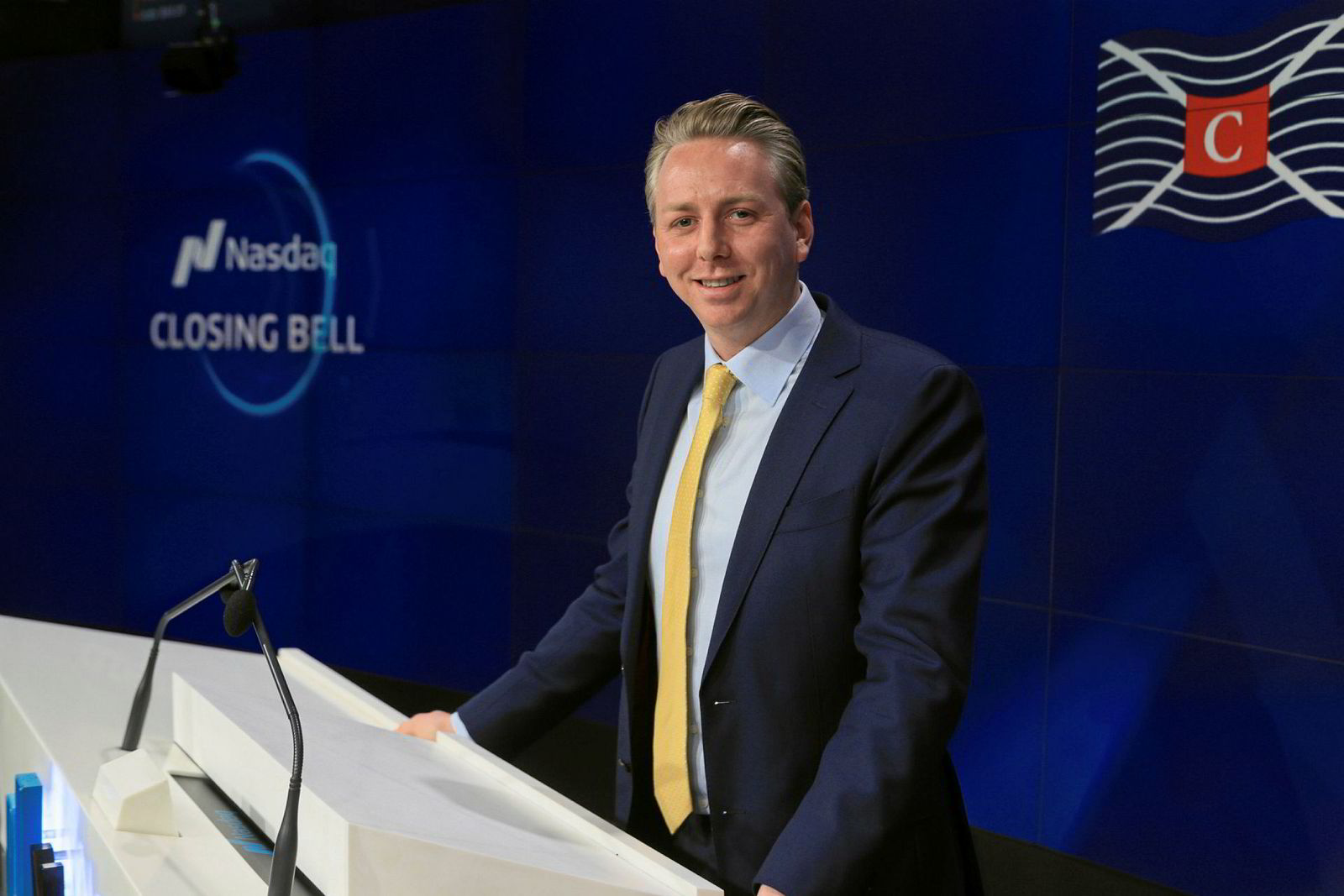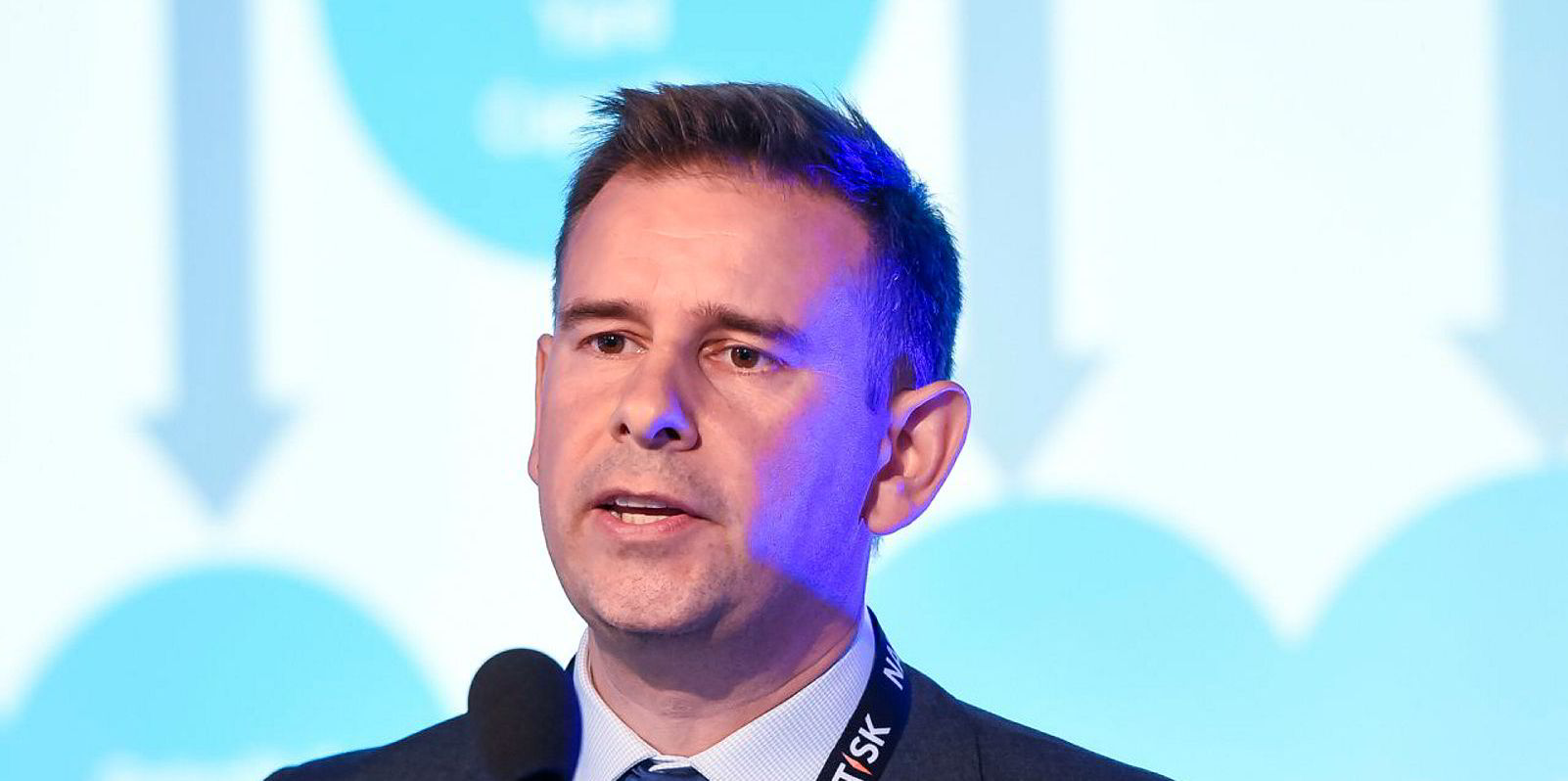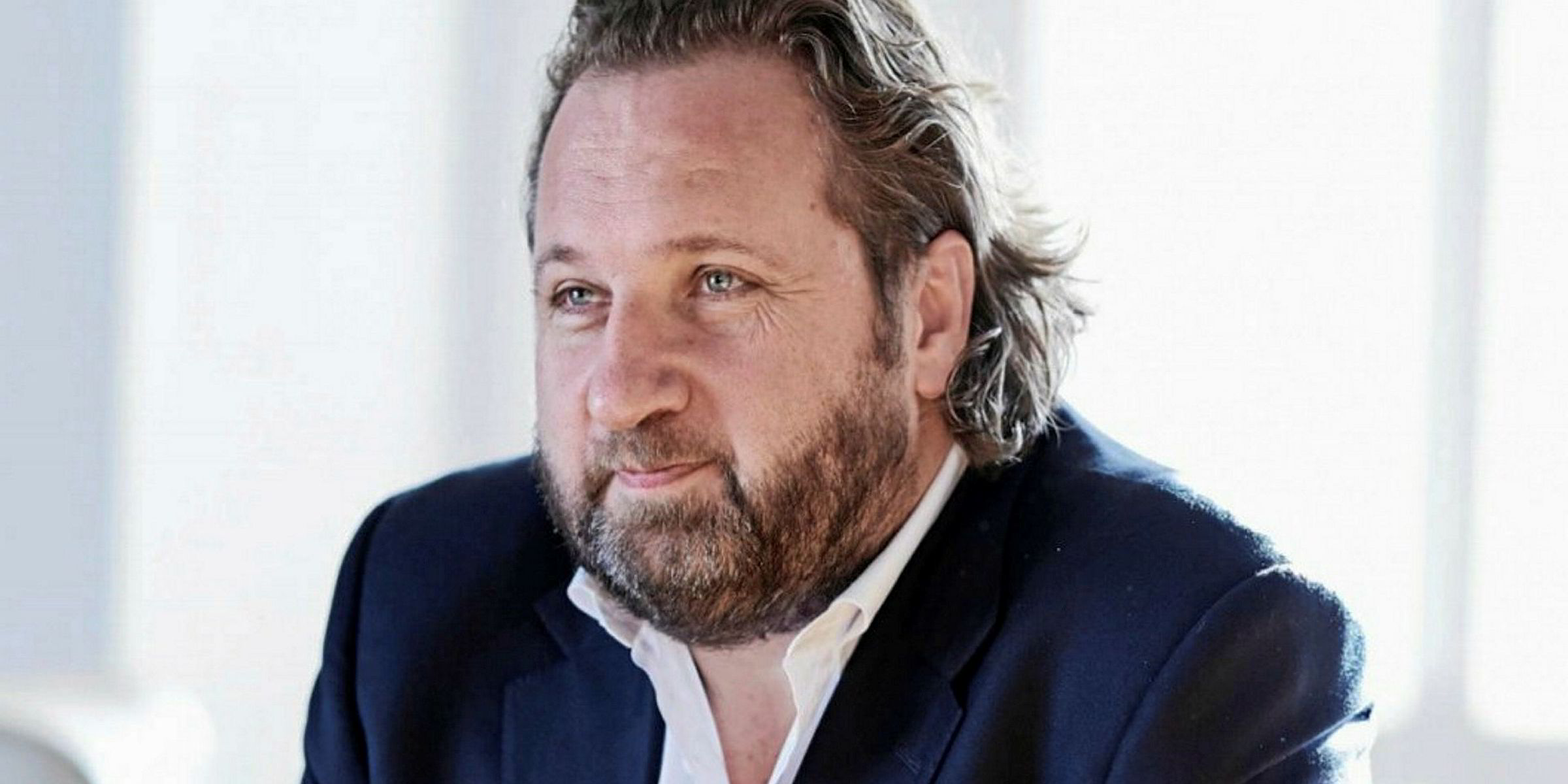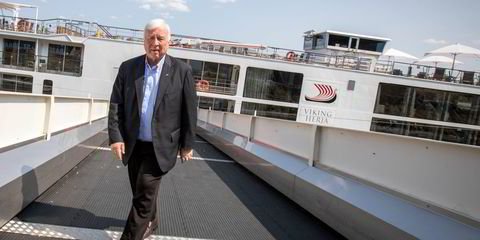At last, a shipping company had something to celebrate at Nasdaq in the heart of New York’s Times Square.
No, it wasn’t an initial public offering. No shipowner has been able to list on either of New York's exchanges since June 2015 and there's no sign of the drought ending soon.
But a crew from Clarksons Platou Futures was in great spirits this afternoon after being recognised as Nasdaq’s largest freight futures agreement (FFA) broker of the past year.
The group took center stage for Nasdaq’s symbolic closing bell ceremony, and the image of dry freight derivatives chief Rob Byrne was projected 50-feet high on the massive video screens on Broadway as mobs of curious tourists looked on.
Byrne tells TradeWinds he is "absolutely delighted" with the honour as "this award celebrates the hard work of our FFA team who use our deep market understanding to deliver first-class service to our clients every day.”
Byrne said after the ceremony that while Clarksons pioneered FFA in the 1990s, it has steadily refined its handling of the products, which came more in demand after collapse of physical freight markets in 2008.
Progress has continued since Byrne took over the desk in November 2017.
"We were already solid when I got to the company with about 10% of the market, and now we're looking at about 20%,” Byrne said. “We've been able to significantly improve, making new hires and devoting additional resources.”
Clarksons has 11 FFA brokers with nine headquartered in London, one in Geneva and one in Singapore, he said. It is the only outfit with a broker in Geneva, he said.
The majority of those in the market are charterers, Byrne said, with some funds and speculators also in the mix. Increasingly, there also has been interest from shipowners, he said.
“Shipowners have been very reluctant to trade FFAs in the past but are now seeing reasons to trade them," Byrne said.
That could be yet another factor leading the Clarksons staff to applaud, as they managed to do for a full two minutes today as the ceremony was captured by multiple US cable-television networks.
